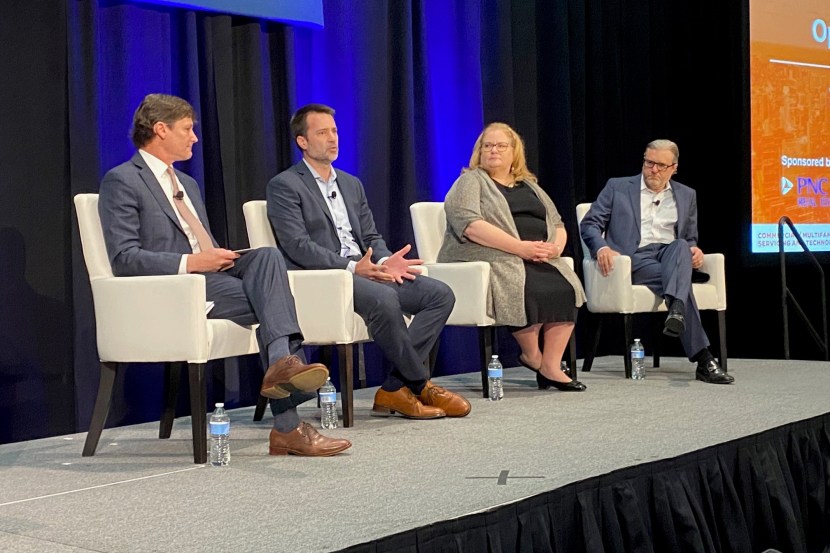
#MBACMST23: Facing up to Office Sector Challenges

(l.-r.: Matt Rocco, Jeff Breaden, Christine Chandler, Chris Shamaly)
CHICAGO–The office sector faces major challenges, but servicers and asset managers can handle them, panelists said here at the MBA Commercial/Multifamily Finance Servicing and Technology Conference.
“We look at office as something we’ve always been a part of and we are not turning away from it, however, we are ensuring those lending opportunities are well thought through,” said Christine Chandler, Executive Vice President, Chief Credit Officer & Chief Operating Officer with M&T Realty Capital Corp., Baltimore. She said lenders are not necessarily saying no to the office sector, but noted they are being very strategic and looking at each opportunity as an individual opportunity.
“When you have a portfolio, you have to ensure that your maturities are diversified, so that’s something we are looking at as well: location, sponsorship and the economics of the opportunity,” Chandler said.
To prepare for challenges the offices sector faces, servicers and asset managers should enhance their surveillance and monitoring, Chandler said. “Look at the rent rolls; are tenants renewing their leases? There used to be long-term leases with built-in extensions, but now fewer tenants are extending. Ask questions of the borrowers and make sure you get that information that you’re required to have,” she said.
Chris Shamaly, Executive Managing Director with CBRE Capital Markets, Dallas, said liquidity has not yet been a problem. “Debt funds and private equity firms have stepped up and refinanced a lot of debt,” he said. But he noted possible trouble ahead in Class B and C office properties and large properties outside of central business districts.
Shamaly said office defaults have increased, “but only over the last five or six months,” he said. “It’s really interest rate driven. Defaults have increased, but not very much, historically speaking.” But looking ahead, he found numerous questions about the future. “How many people are in this room? That’s how many guesses there will be about what will happen 24 to 36 months from now.”
Panelists also discussed if or when most workers will return to their offices. “The return-to-office question is tricky,” Shamaly said. “The problem now is that employees want to come back two or three days a week, but most of them want to be in the office on the same days, generally Tuesday, Wednesday and Thursday, so, really, office occupiers need the same space they used before the pandemic.”
Jeff Breaden, Executive Vice President of Finance, Asset Management and Capital Markets with Prime Group Inc., Chicago, said many office tenants will need to “re-stack” rather than renew in their current space. “It’s tough to renew somebody in place and update their space for working three days a week in the office,” he said. “This is where we are looking for opportunities to be in at a low basis and find buildings where we absorb those tenants who need to re-stack.”
Breaden said many employers are still figuring out how to restructure their office needs. “The easy answer is they anticipate having a portion of their team nearly permanently working from home, so they are looking to make the office space they have interesting to their team,” he said.
Despite the uncertainty in today’s office market, it presents a great opportunity for young people, Shamaly said. “During a down market, that’s when you learn the most,” he said.
